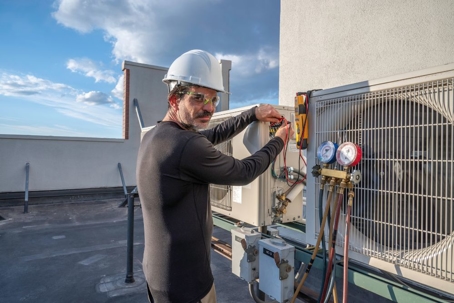Send us an email
Please enter your name and contact info.
Please enter your name and contact info.
Call Us Today! (850) 748-1066

Serving Families Throughout Pensacola

Ductless mini-split systems are becoming increasingly popular as an efficient and cost-effective way to heat and cool homes. While these systems have many advantages, there are also some disadvantages that homeowners should consider before deciding to install a ductless mini-split system.
1. Upfront Cost
One of the biggest disadvantages of ductless mini-split systems is the upfront cost. Compared to traditional HVAC systems, ductless mini-split systems are more expensive to purchase and install. While the cost may be offset by energy savings in the long run, it can be a significant barrier for some homeowners.
2. Limited Cooling Capacity
Ductless mini-split systems are designed to cool a single room or small area. While they can be used to cool larger spaces, multiple units may be needed to achieve the desired cooling capacity. This can be a disadvantage for homeowners who want to cool their entire home with a single system.
3. Aesthetics
While ductless mini-split systems are often praised for their sleek and modern design, some homeowners may find the indoor unit to be unsightly. The indoor unit can be mounted on a wall or ceiling, which may not be appealing to everyone. Additionally, the outdoor unit can be large and bulky, which can be a concern for homeowners with limited outdoor space.
4. Maintenance
Ductless mini-split systems require regular maintenance to operate efficiently. This includes cleaning the filters, checking the refrigerant levels, and inspecting the system for any signs of wear or damage. While the maintenance requirements are minimal, some homeowners may find it to be a hassle or may forget to perform the necessary tasks.
5. Installation
Installing a ductless mini-split system requires a professional installation. This can be a disadvantage for homeowners who enjoy DIY projects or who want to save money by installing the system themselves. Additionally, the installation process can be disruptive to the home and may require modifications to the home’s electrical system.
6. Noise
While ductless mini-split systems are generally quiet, they do produce some noise when operating. The noise can be a concern for homeowners who are sensitive to sound or who have the system installed in a bedroom or other quiet space.
7. Environmental Concerns
Ductless mini-split systems use refrigerant to cool and heat the air. While the refrigerant used in most modern systems is less harmful to the environment than older refrigerants, it still has the potential to contribute to ozone depletion and climate change if it is released into the atmosphere. Proper handling and disposal of the refrigerant is essential to minimize its impact on the environment.
In conclusion, ductless mini-split systems have many advantages, including energy efficiency, easy installation, and zoning capabilities. However, there are also several disadvantages that homeowners should consider before deciding to install a ductless mini-split system. These disadvantages include the upfront cost, limited cooling capacity, aesthetics, maintenance, installation, noise, and environmental concerns. Ultimately, the decision to install a ductless mini-split system will depend on a homeowner’s individual needs, preferences, and budget.
The post What are the disadvantages of ductless mini split systems appeared first on Diamond Air Design.